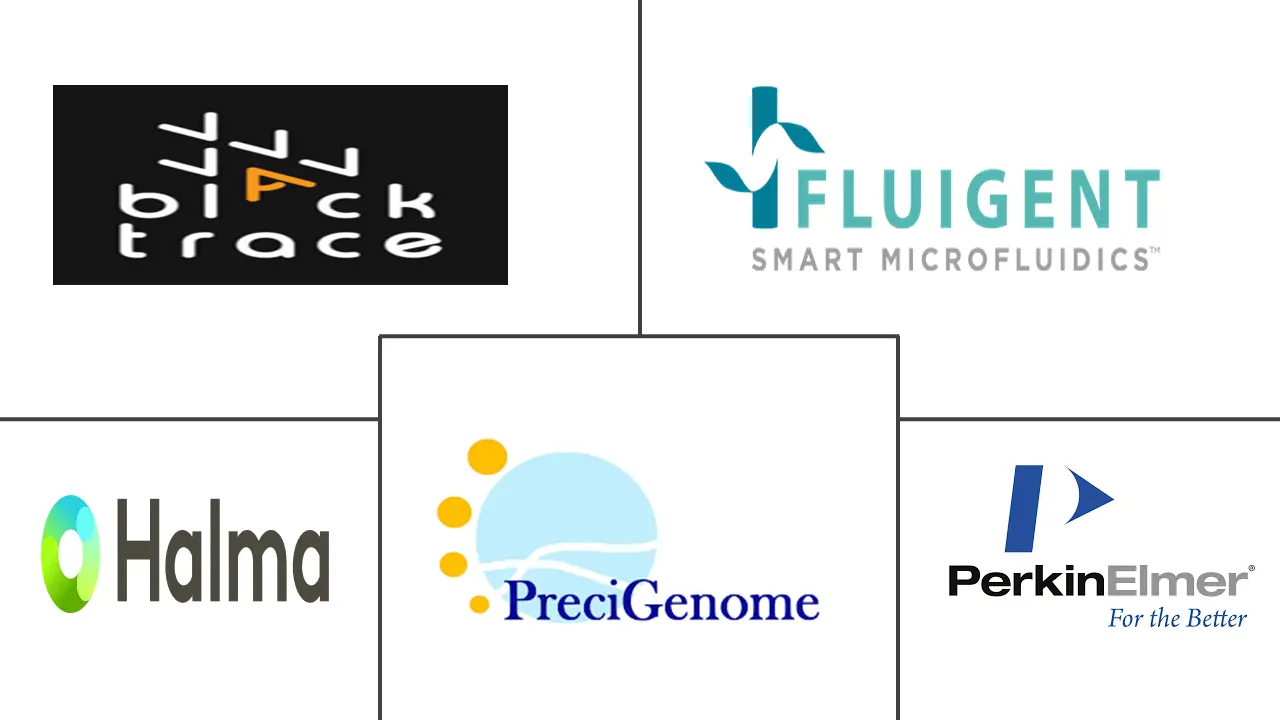Fluidics For Preclinical Market Size and Share
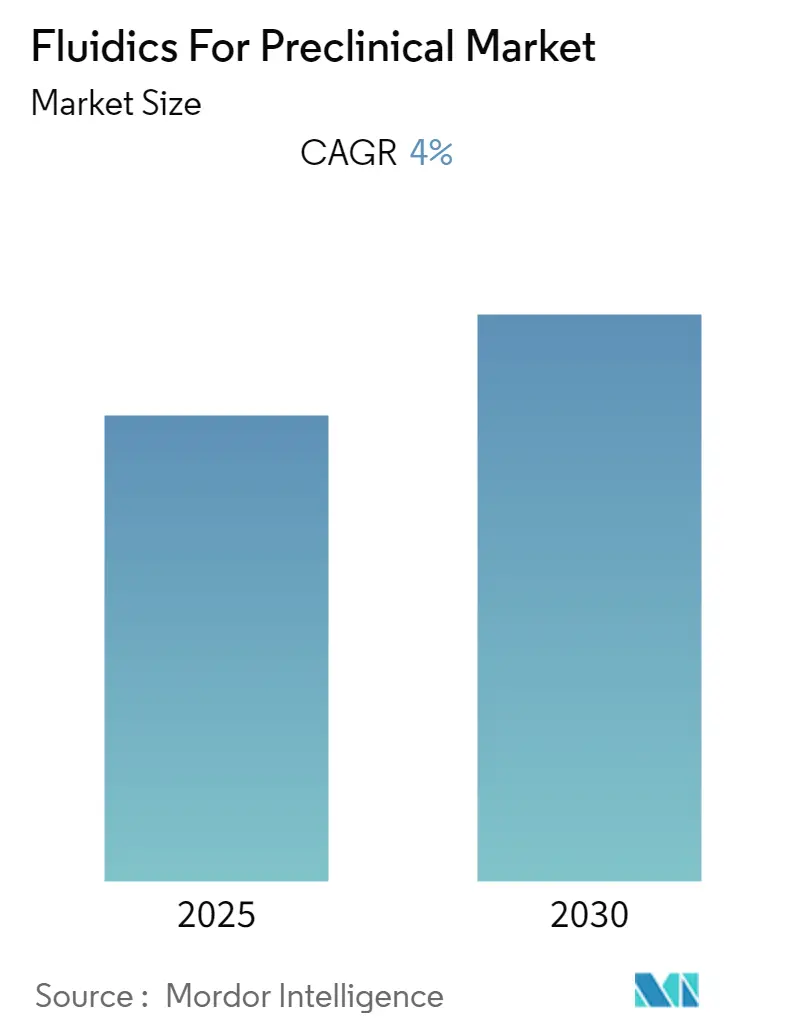
Fluidics For Preclinical Market Analysis by Mordor Intelligence
The Fluidics For Preclinical Market is expected to register a CAGR of 4% during the forecast period.
COVID-19 has impacted market growth owing to the lockdown measures imposed by the government, leading to the disruption of preclinical research, which has impacted the market growth during the initial phase of the pandemic. In early 2020, with increasing COVID-19 cases, companies focused on conducting preclinical research to develop mRNA-based vaccines against coronavirus, which has increased the demand for fluidics for preclinical. For instance, according to an article published in the Life Journal in May 2022, it has been observed that SARS-CoV-2 antibodies were detected using a variety of methods, including the microfluidic DA-D4 (double-antigen bridging immunoassay technique), which finds total antibodies, including all subclasses and isotypes, and sandwich/competitive immune-sensors based approaches, and enable the analysis of three samples per device. Also, as per the same source, the semi-automated microfluidic platform with the traditional multilayer soft-lithography technology can detect antibodies against four SARS-CoV-2 antigens while processing 50 samples in a single device. Thus, the high utilization of fluidics techniques for detecting coronavirus increased the market growth during the pandemic. Moreover, with the increasing number of drug development processes, the studied market is anticipated to grow over the forecast period.
Factors such as the growing preclinical research and the increasing incidences of chronic diseases are expected to boost market growth over the forecast period.
The rising burden of chronic diseases such as cancer, diabetes, cardiovascular diseases, and others increases the demand for point-of-care testing and novel drugs, which is expected to propel the demand for fluidics for the preclinical market over the forecast period. For instance, according to the 2022 statistics published by IDF, about 537 million people were living with diabetes in 2021, which is projected to reach 643 million and 784 million by 2030 and 2045, respectively. This is anticipated to increase the demand for testing using microfluidic chips and small samples of blood, hence boosting the market's growth.
Additionally, as per 2022 statistics published by Dementia Australia, 401,300 Australians were living with dementia in Australia in 2022, and this number is projected to reach about 849,300 million (533,800 women and 315,500 men) by 2058. Thus, the increasing burden of dementia among the target population raises the need for effective drug discovery, screening methods, and toxicology studies. This increases the demand for fluidics systems or software that can be used to grow neurites, glial cells, endothelial cells, and skeletal muscle cells, along with the maintenance of fluid isolation, and provides an opportunity to investigate organogenesis and disease etiology.
Furthermore, the increasing facility and investment for preclinical research studies are also contributing to the market growth. For instance, in October 2022, the Minister for Municipal Administration and Urban Development, Industries and Commerce, and Information Technology, India, inaugurated the state-of-the-art facility of the GV Safety Assessment Platform (GVSAP), preclinical services vertical of GV Research Platform (GVRP) involved in commercial breeding of Specific Pathogen Free (SPF) research models and preclinical testing in Hyderabad. Also, in April 2022, The National Growth Fund in the Netherlands invested EUR 325 million (USD 345 million) to accelerate the preclinical development process of cancer drugs. With this investment, Oncode-PACT will develop valuable drug candidates faster and cheaper, which is anticipated to augment the market growth over the forecast period.
Therefore, owing to the aforementioned factors, such as the high burden of diabetes and dementia among the population and the increasing investment in preclinical research, the studied market is anticipated to grow over the forecast period. However, the stringent regulatory framework is likely to hinder the growth of the fluidics for the preclinical market over the forecast period.
Global Fluidics For Preclinical Market Trends and Insights
Software and Accessories Segment is Expected to Witness Significant Growth Over the Forecast Period
The software and accessories segment is anticipated to fuel the growth of fluidics for the pre-clinical market over the forecast period owing to factors such as the rising incidence of chronic disorders, such as cancer, cardiovascular diseases, and others, raising the demand for point of care, high-throughput screening methodologies, low-volume sample analysis, in-vitro diagnostics, and the development of novel technologies.
The utilization of new software and artificial intelligence (AI)-driven solutions to facilitate pre-clinical drug development is increasing in the pharmaceutical industry. For instance, according to an article published in Drug Discovery in April 2022, it has been observed that AI-driven target discovery systems can extract and synthesize target-relevant information from a large volume of complex, diverse multi-omics data to better understand target biology, reveal disease relationships, and find targets. Thus, the inclusion of such techniques in pre-clinical research provides useful criteria for ligandability assessment and prioritization of drug targets for development. This is expected to increase its adoption, thereby contributing to segment growth.
The growing company activities in developing novel software and accessories are expected to fuel the segment's growth over the forecast period. For instance, in June 2021, Sphere Fluidics and ClexBio launched a biocompatible CYTRIX Microfluidic Hydrogel kit, designed with Pico-Gen double aqueous biochip that enables defined reproducible and tailorable hydrogel microstructures for 3D cell culture, organoids, and single-cell analysis. The kit allows researchers to study valuable cells over many weeks rather than days in defined microenvironments that mimic the natural extracellular matrix.
Therefore, due to the aforementioned factors, such as increasing research and development for drugs and the launch of products, the studied market segment is expected to project growth over the forecast period.
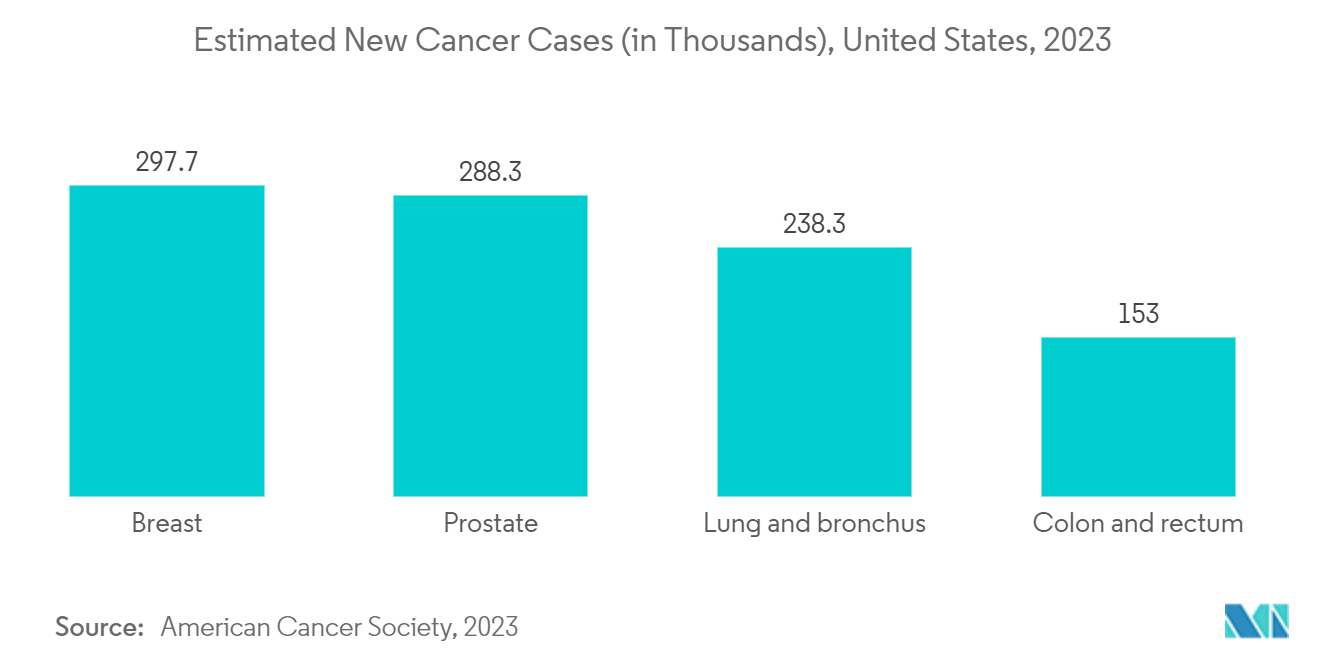
North America is Expected to Have the Significant Market Share Over the Forecast Period
North America is expected to hold the major share in the fluidics for the pre-clinical market over the forecast period owing to factors such as the well-established healthcare system and the increasing number of pre-clinical researchers due to the higher adoption of novel therapeutics among the general population, increasing prevalence of chronic diseases in the region.
The increasing prevalence and incidence of chronic diseases such as cancer, cardiac, and others among the population is the key factor driving the demand for effective therapeutics, which in turn is anticipated to increase the pre-clinical research. This fuels the growth of the fluidics market over the forecast period. For instance, as per 2023 statistics published by ACS, about 1,958,310 new cancer cases are expected to be diagnosed in the United States in 2023. Also, as per 2022 statistics published by IDF, about 32.2 million, 14.1 million, and 2.9 million people were suffering from diabetes in the United States, Mexico, and Canada, respectively, in 2021, and this number is projected to reach 36.2 million, 21.1 million, and 3.4 million by 2045, respectively.
Furthermore, the rising new product launches and establishing new research facilities in the region are expected to fuel market growth over the forecast period. For instance, in November 2021, the University of Toronto and the National Research Council of Canada (NRC) collaborated to establish the Centre for Research and Applications in Fluidic Technologies (CRAFT), a new research facility at the university's St. George campus. The center's mission is to advance the fabrication of micro- and nanofluidic devices as well as to rapidly produce and deploy polymer-based biomedical microdevices, such as organ-on-a-chip models of heart tissues and handheld 3D skin printers. Also, in June 2021, Fluid Metering launched the new FVD series of variable dispense pumps, a compact, low-profile design that addresses the requirements of microfluidics while doubling the lifecycle of current technology available on the market.
Therefore, owing to the aforementioned factors, such as the high burden of chronic diseases, growing government initiatives to support clinical research and new product launches, the studied market is expected to grow over the forecast period.
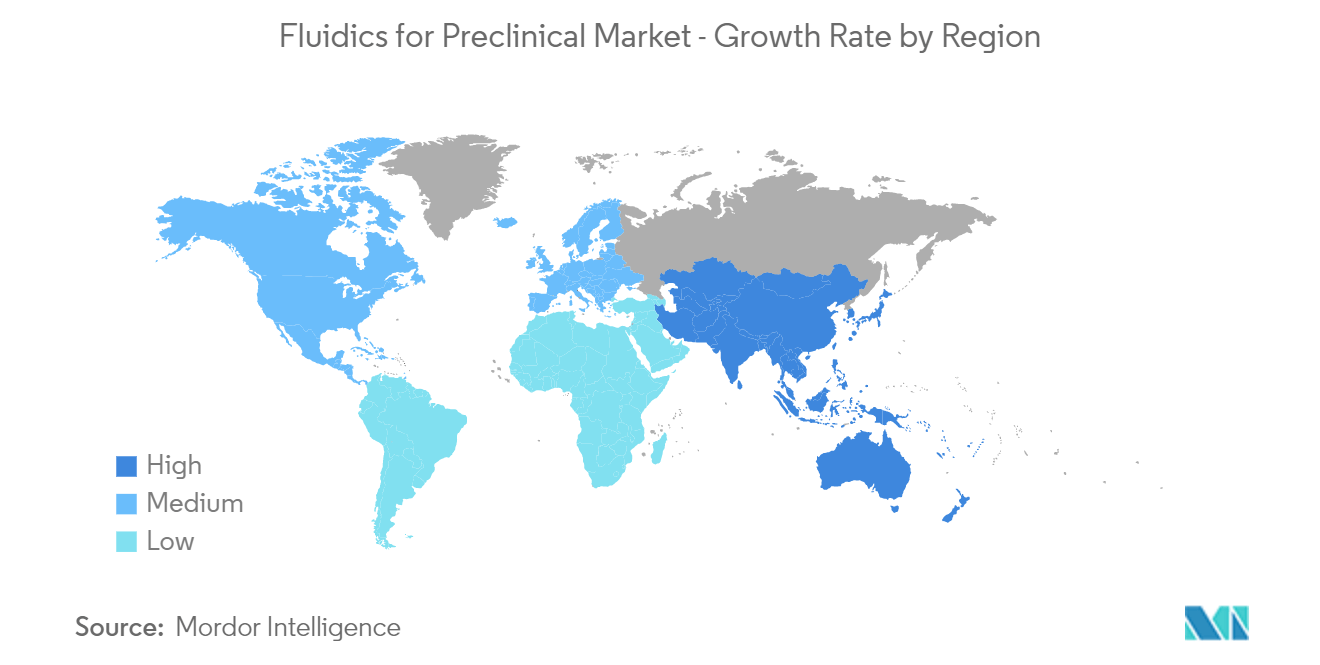
Competitive Landscape
The fluidics for the preclinical market is consolidated due to the presence of a small number of players. Some of the key players in the market are Blacktrace Holdings Ltd., Fluigent SA, Halma Plc, PerkinElmer Inc., Precigenome LLC, and Harvard Bioscience Inc. among others.
Fluidics For Preclinical Industry Leaders
-
Blacktrace Holdings Ltd.
-
Fluigent SA
-
Halma Plc
-
Precigenome LLC
-
PerkinElmer Inc.
- *Disclaimer: Major Players sorted in no particular order
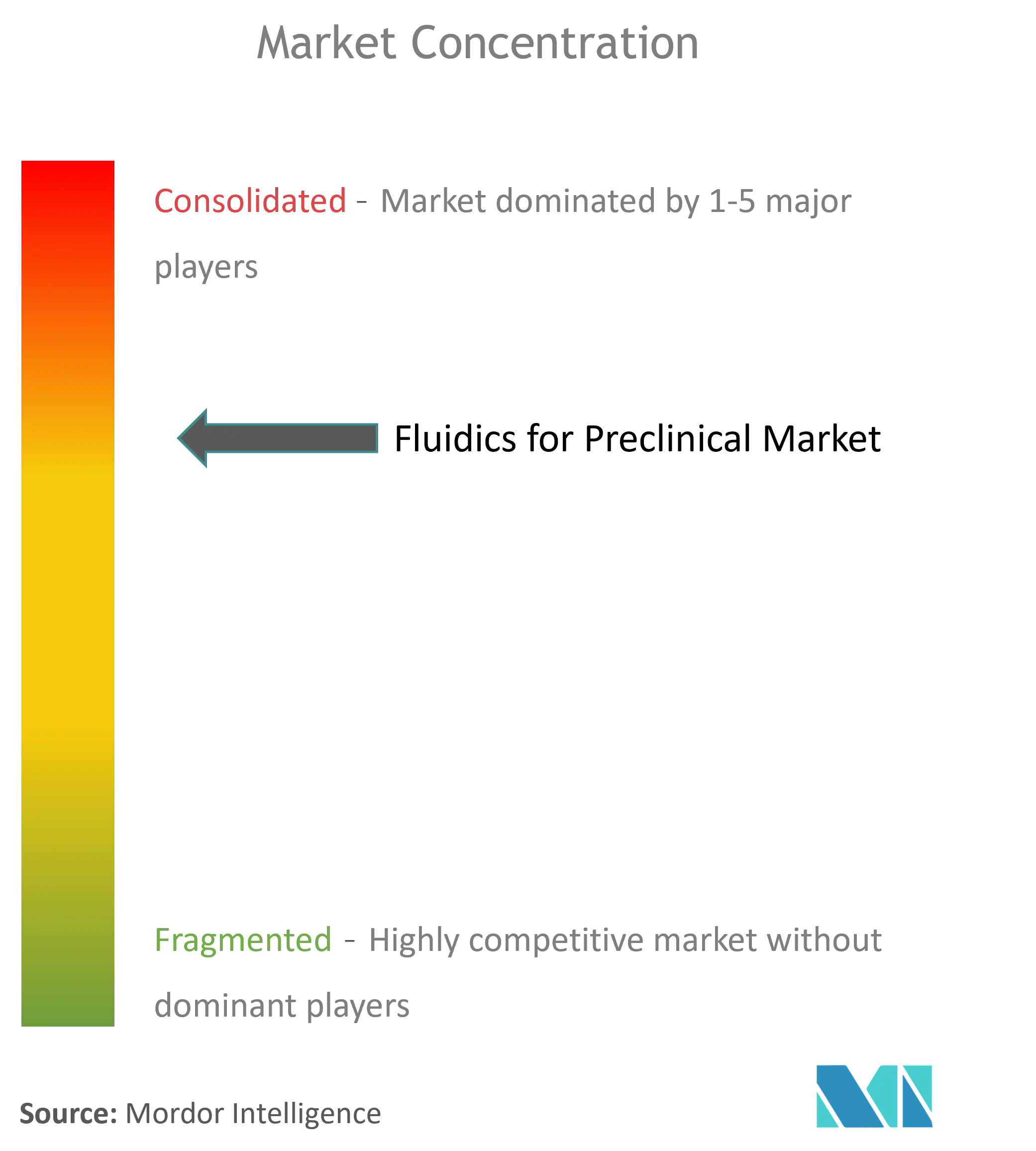
Recent Industry Developments
- June 2022: Brinter launched the multi-material, multi-fluidic 3D bioprinting printhead. The device's broad material capabilities make it unique and are intended to support applications in higher-precision tissue engineering and regenerative medicine, such as the healing of tissue damage, the replacement of biological functions, and the treatment of localized disease.
- June 2022: Rapid Fluidics collaborated with Life on a Chip, a German-based company. This collaboration brings together advanced skills in microfluidic design and rapid prototyping to serve clients developing microfluidic systems.
Global Fluidics For Preclinical Market Report Scope
As per the scope of the report, fluidics for preclinical is a combination of science and technology, which is used in studying the behavior of fluids through microchannels. It manipulates and controls fluids in a network of channels with dimensions from tens to hundreds of micrometers. The fluidics for the preclinical market is segmented by product type (software and accessories and precision syringe pumps), application (life science research and clinical application), and geography (North America, Europe, Asia-Pacific, and the rest of the world). The report offers the value (in USD) for the above segments.
| Software and Accessories |
| Precision Syringe Pumps |
| Life Science Research |
| Clinical Application |
| North America | United States |
| Canada | |
| Mexico | |
| Europe | United Kingdom |
| Germany | |
| France | |
| Italy | |
| Spain | |
| Rest of Europe | |
| Asia-Pacific | China |
| Japan | |
| India | |
| Australia | |
| South Korea | |
| Rest of Asia-Pacific | |
| Rest of the World |
| By Product | Software and Accessories | |
| Precision Syringe Pumps | ||
| By Application | Life Science Research | |
| Clinical Application | ||
| Geography | North America | United States |
| Canada | ||
| Mexico | ||
| Europe | United Kingdom | |
| Germany | ||
| France | ||
| Italy | ||
| Spain | ||
| Rest of Europe | ||
| Asia-Pacific | China | |
| Japan | ||
| India | ||
| Australia | ||
| South Korea | ||
| Rest of Asia-Pacific | ||
| Rest of the World | ||
Key Questions Answered in the Report
What is the current Fluidics for Preclinical Market size?
The Fluidics for Preclinical Market is projected to register a CAGR of 4% during the forecast period (2025-2030)
Who are the key players in Fluidics for Preclinical Market?
Blacktrace Holdings Ltd., Fluigent SA, Halma Plc, Precigenome LLC and PerkinElmer Inc. are the major companies operating in the Fluidics for Preclinical Market.
Which is the fastest growing region in Fluidics for Preclinical Market?
Asia Pacific is estimated to grow at the highest CAGR over the forecast period (2025-2030).
Which region has the biggest share in Fluidics for Preclinical Market?
In 2025, the North America accounts for the largest market share in Fluidics for Preclinical Market.
What years does this Fluidics for Preclinical Market cover?
The report covers the Fluidics for Preclinical Market historical market size for years: 2019, 2020, 2021, 2022, 2023 and 2024. The report also forecasts the Fluidics for Preclinical Market size for years: 2025, 2026, 2027, 2028, 2029 and 2030.
Page last updated on:
Fluidics For Preclinical Market Report
Statistics for the 2025 Fluidics For Preclinical market share, size and revenue growth rate, created by Mordor Intelligence™ Industry Reports. Fluidics For Preclinical analysis includes a market forecast outlook for 2025 to 2030 and historical overview. Get a sample of this industry analysis as a free report PDF download.
